Roofing Systems
TPO Roofing System
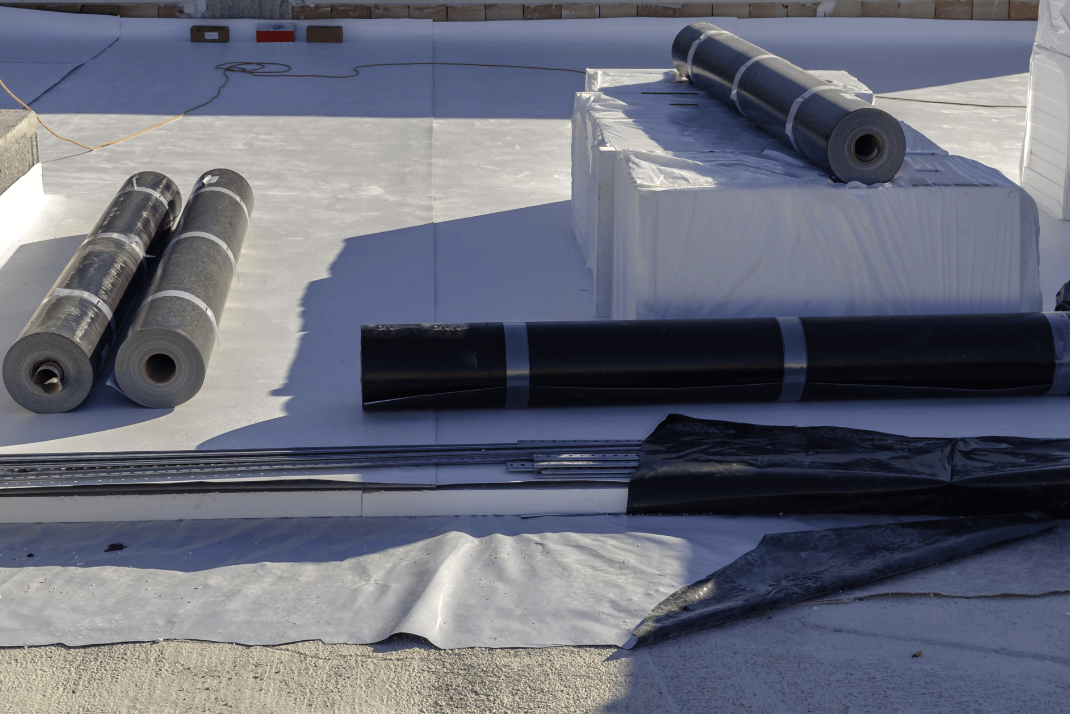
In addition to weathering harsh conditions, the TPO Roofing System is engineered with advanced reflectivity which dramatically increases energy efficiency for the property and helps to keep industrial, multi-family, and retail spaces cool.
Benefits of the TPO Roofing System:
- TPO is offered in different thickness [enter range] and prices options to fit the budget of varying projects based on your needs. By offering different packages, you get all the performance of a TPO Roofing System without having to stretch your budget.
- TPO membranes are heat-weldable blends that have been shown to reflect up to 87% of sun rays which significantly lowers energy and cooling cost for your property.
- TPO roofing solutions come with an average warranty of 20 years and provide LEED credit qualification, are Energy Star rated and are Cool Roof Rating Council approved.
TPO Roofing Systems are most widely used by and recommended for the following industries:
- Retail
- Airports
- Healthcare
PVC Roofing System
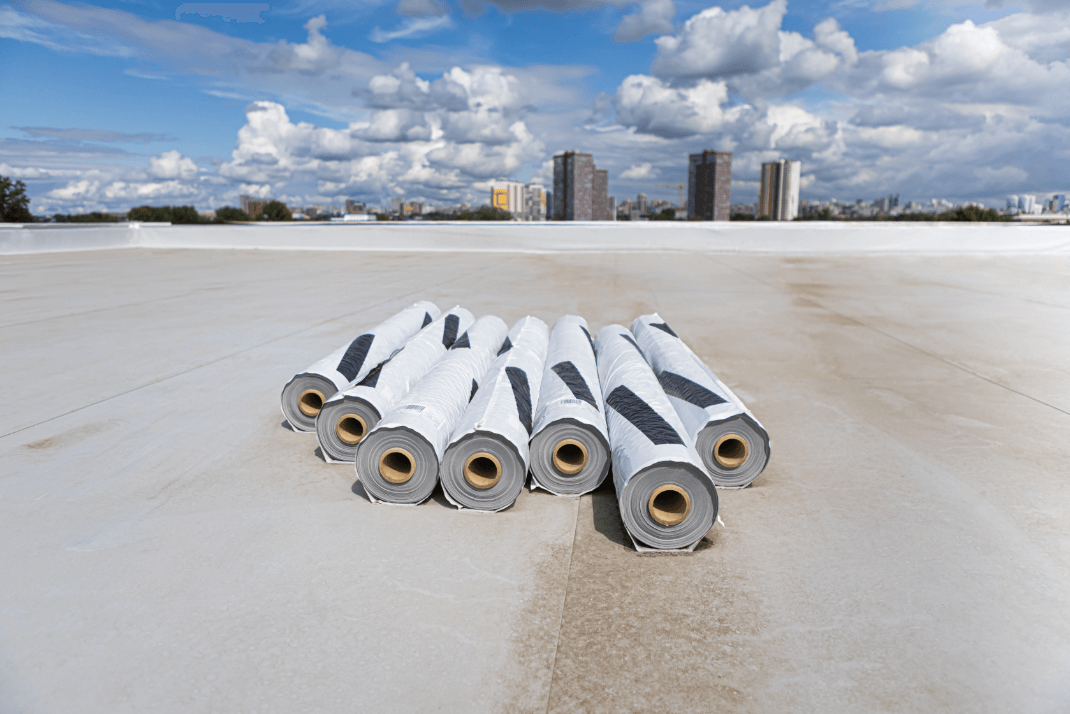

And lastly, with thickness available up to 80mil, the PVC roofing system is highly resistant to leakage, tears and water absorption.
Benefits of the PVC Roofing System:
- Excellent option for facilities that need roofing that is extremely resistant to oil, grease and chemicals due to the highly resistant surface of the PVC roofing system.
- The PVC Roofing System has a very high SRI (solar reflective index) making this option both efficient and environmentally friendly.
- TPO roofing solutions come with an average warranty of 20 years and provide LEED credit qualification, and are Energy Star rated.
PVC Roofing Systems are most widely used by and recommended for the following industries:
- Retail
- Airports
- Healthcare
EPDM Roofing Systems
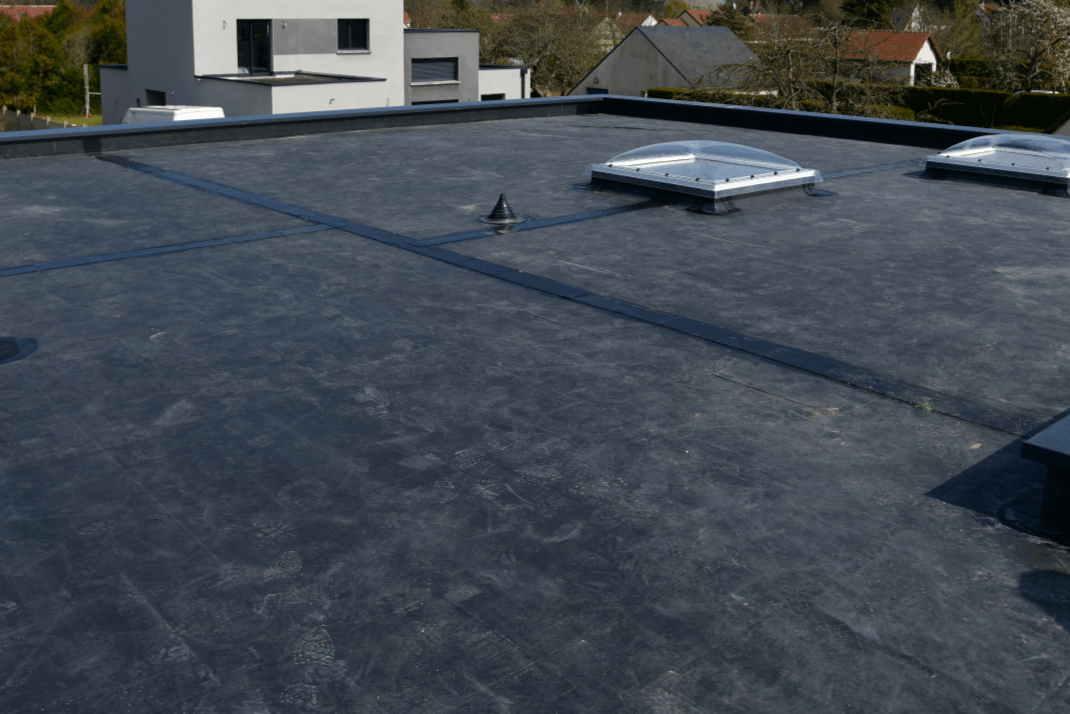

The EPDM Roofing system is resistant to ozone deterioration and has one of the highest tensile strength of any roofing system membrane. In warmer climates the UV-built in protection will prevent heat from sun from penetrating the property, while the water-resistant surface prevents any pollution in rainwater runoff making the EPDM system both energy efficient and environmentally sound.
Benefits of the EPDM Roofing System:
- The strength and versatility of the EPDM roofing system is a popular choice for properties that experience harsh, dramatic weather fluctuations.
- Fire resistant, recyclable and resistant to freezing over.
- The EPDM roofing system looks good too. For commercial, retail, and multi-family property, its smooth finish provides a clean aesthetic that can bolster your properties image and professionalism.
Modified Bitumen Roofing System
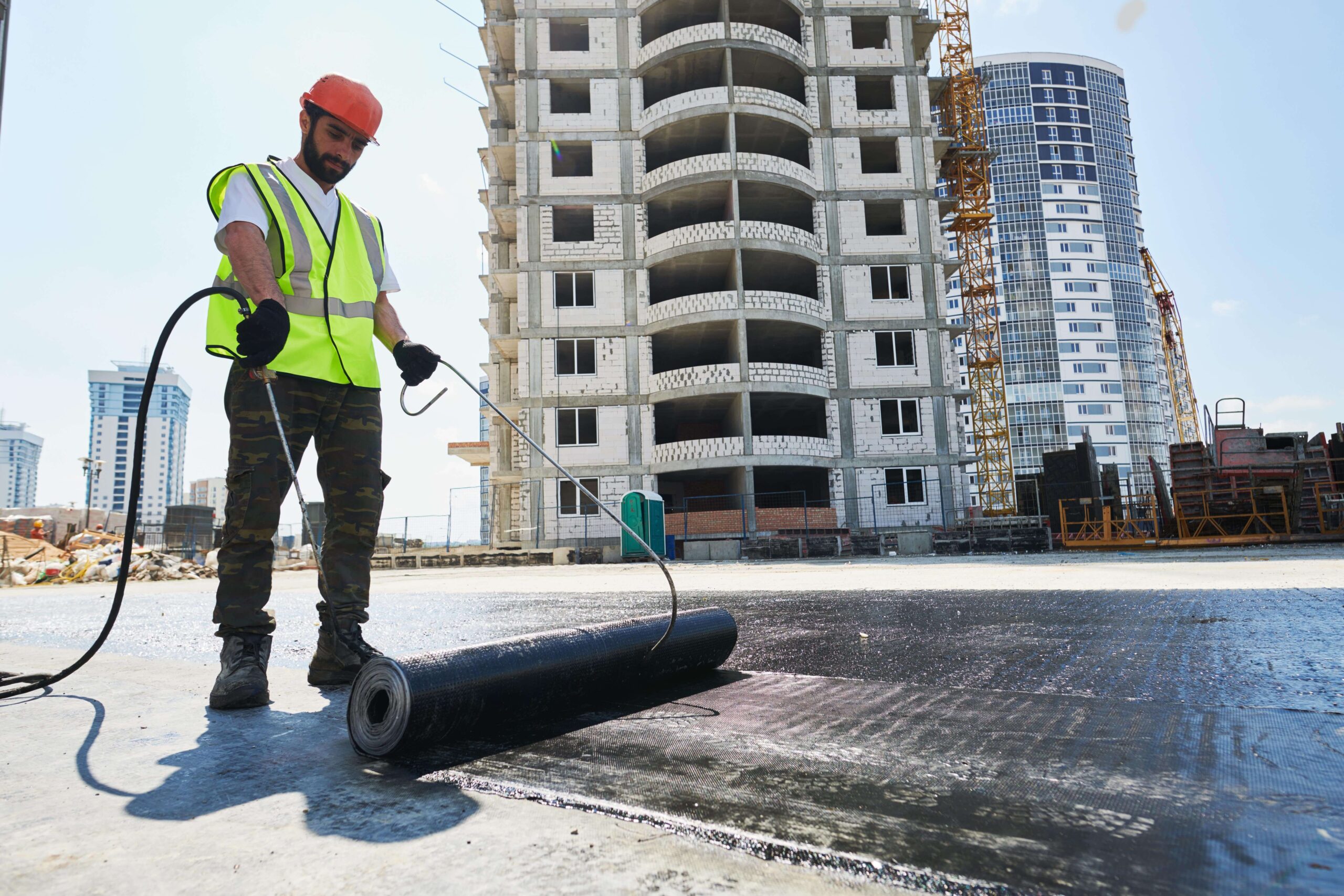

For decades, the Modified Bitumen roofing solution has been a loyal product to low-slope and flat roofed properties due to its durability, flexibility and low-cost maintenance.
Benefits of the Modified Bitumen Roofing System:
- By far, the overwhelming advantage of modified bitumen in comparison to other roofing systems is its tear-resistance – thanks to the combination of fiberglass and/or polyester reinforcement layers.
- For properties that experience high levels of rainfall, the modified bitumen flexes its value since it’s the most water-resistant commercial roofing system available.
- Easily upgraded to be energy efficient with the application of solar reflectance and thermal emission technologies that cut down your properties cooling costs.
Modified Bitumen roofing systems are most widely used by and recommended for the following industries:
- Retail
- Airports
- Healthcare
Metal Roofing System


For starters, the metal roofing system is a top-tier system when it comes to durability and endurance extending the life-cycle to your roof and thus, saving you money. In fact, properties that can expect extremely high-wind weather are prime candidates for this system since some metal roofs can withstand winds up to 140mph. And depending one what metal you choose, some systems will not corrode or crack and are impact resistant to the most severe winds.
With today’s engineering, metal roofing systems last up to 40 years with minimal maintenance. Metal roofing is tough and resilient which helps keep your business productive and your operations running smoothly.
Benefits of the Metal Roofing System:
- Extended life-cycle and low-maintenance cost save you money and keep your operations running smooth even under extreme conditions.
- Metal roofing is recyclable and reflective making this system efficient and easy to repair (when needed).
- Metal roofing is not only utility based. With many colors and styles available, you can pair performance with aesthetics without extensive cost to bolster your properties curb appeal and professional image.
Metal roofing systems are most widely used by and recommended for the following industries:
- Retail
- Airports
- Healthcare
Elastomeric Roof Coatings


In warm weather, this coating expands to stay pliable and when it cools down returns to its primary state. This flexibility makes it a wise solution for properties that experience drastic weather fluctuations since the Elastomeric roof coating is engineered to be crack and stretch resistant.
Benefits of Elastomeric Roof Coatings:
- The elastomeric roof coating provides maximum protection to your existing roof, protecting from leakage, wind damage, and extreme weather conditions. This system is also dirt, dust and resistant offering additional protection and durability to your roof.
- Lower HVAC output and decreased cooling costs since the elastomeric roof coating reduces thermal transfer by reflecting sun rays away from the interior of the property.
- This system is a low-overall cost. Application is very simple and the system is substantially less expensive compared to replacing the entire roof. Budget-conscious property owners can expect to extend the life-cycle of their roof by up to 10 years with minimal investment.
Metal roofing systems are most widely used by and recommended for the following industries:
- Retail
- Airports
- Healthcare
Fluid Applied Coating (Silicone and/or Acrylic)
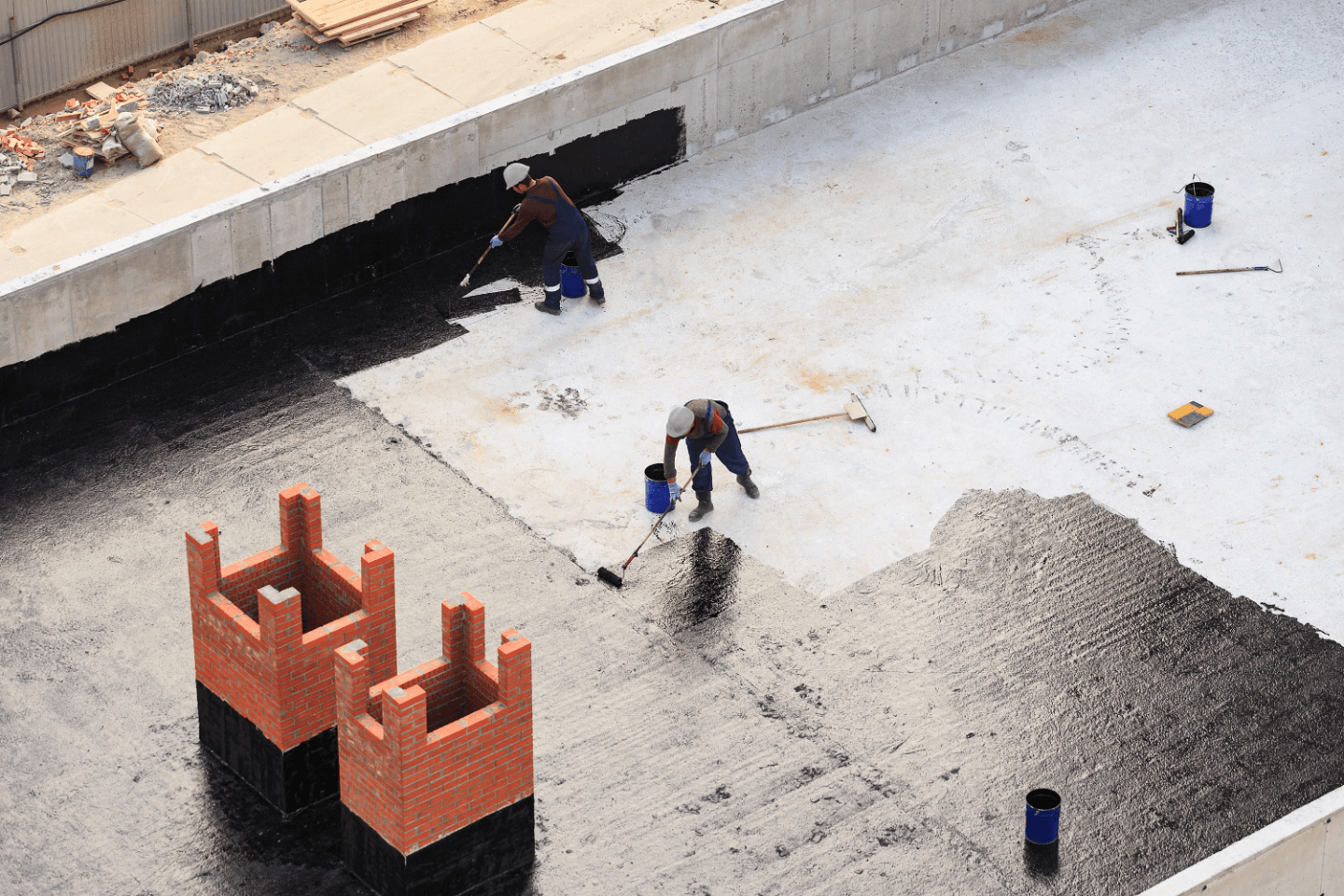

FLUID ROOF COATING
In recent years, fluid applied coatings have boomed across the roofing industry for one main reason: Extended life-cycle for a fraction of the cost. The fluid applied coating system has the potential to extend the life of a roof by decades and requires a fraction of time, investment and resources to that of a full tear-out replacement.Fluid roofing involves the application of a monolithic, fully bonded, liquid based coating that requires zero demolition and upon completion delivers a waterproof membrane that is capable of expanding and contracting to its primary state without damage.
Benefits of Applied Coatings:
- Extreme roof protection without going over budget. The high plasticity of a fluid applied coatings extends the life-cycle of the roof with its capacity to expand and contract in severe weather conditions. This protects your roof from cracks and tears.
- Fluid applied coatings are self-flashing and seamless, which protect roofs from the two most common leak sources. This means you have peace of mind in wet and moist climates when your roof is fortified with a fluid applied coating.
- Fluid applied coatings are estimated to be 70% less expensive than full roof replacement. And, since application requires minimal labor and resources, businesses can remain productive and occupants can remain undisturbed while the coating is applied.
Fluid applied coatings are most widely used by and recommended for the following industries:
- Retail
- Airports
- Healthcare
Shingle Roof Systems
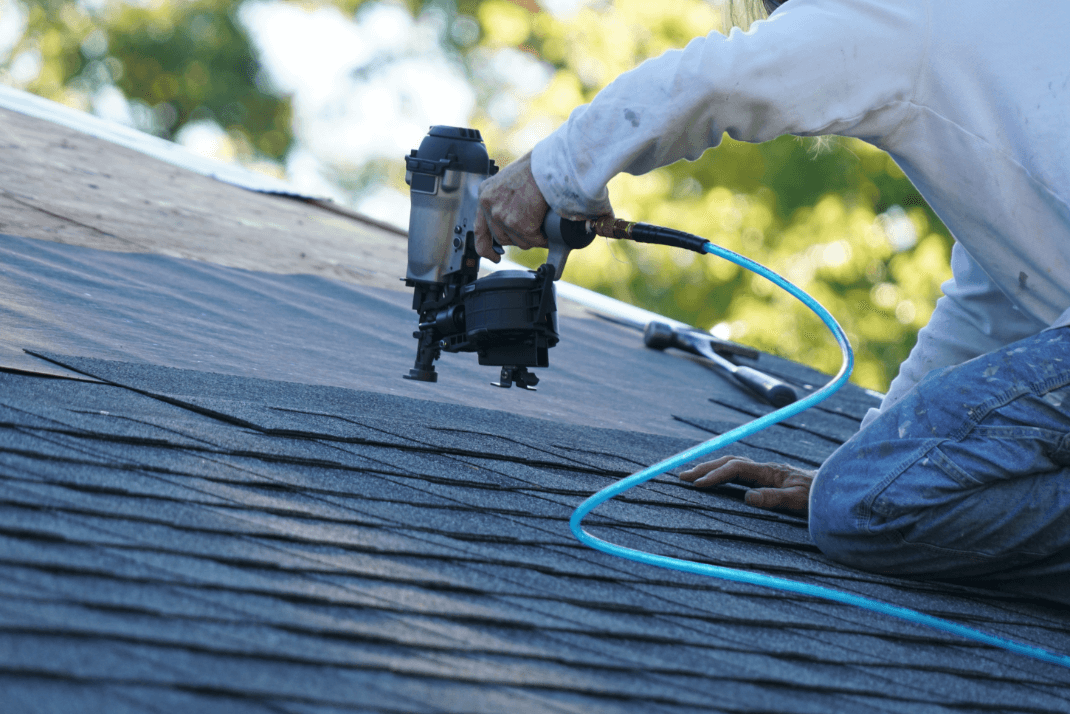

- 3-tab shingles — also referred to as three-tab shingles.
- Dimensional shingles — sometimes called architectural or laminate shingles.
- Luxury shingles — occasionally called premium shingles.
3-Tab Shingles
When it comes to affordability and long-lasting durability, the 3-tab shingle option is the way to go. One-piece, single-layer 3-tab asphalt shingles are the most basic and economical example on the market.3-tab shingles are made from durable fiberglass basemat coated with mineral granules, giving each piece varying color tones.
- Great for budget conscious building owners and managers
- Extremely durable and leak resistant
- Low uplift index since 3-tab shingles are an ideal weight providing extra reinforcement
Dimensional Shingles
Dimensional shingles (also known as architectural shingles) are asphalt shingles with extra flare. These are layered with additional thickness and depth that offer an aesthetic that resembles slate or wood.
Due to the double bonded layer, dimensional shingles provide additional integrity from wind and hail with the premium grade options being able to withstand 120 mph winds.
- Long-life cycle. Premium dimensional shingle systems last up to 40 years with regular (but minimal) maintenance service.
- Dimensional shingles have three-dimensional texture built into them which means there is no need for tab slots like the 3-tab shingle. This provides additional durability with less overall weight and load to the roof and thus, extend the life-cycle.
- The depth and texture dimensional shingles gives them a high quality appearance without the luxury price tag. Dimensional shingles are also highly customizable, offering personal design flexibility based on your taste and the needs of the property.
Luxury Shingles
Get a beautiful roof at a fraction of the cost with luxury shingles.
Unlike slate and cedar shakes, which are made of 100% natural materials that chip and decay over time, luxury shingles are made of an asphalt blend designed to resemble the look of expensive materials, but come in at a fraction of the cost and deliver long-lasting durability.
- Luxury shingles are made from a blend of asphalt and other materials that make them 3X heavier than their natural counterparts. This means increased resilience and the ability to withadns stronger wind, hail and snow.
- Get the same look without the cost. Luxury shingles are synthetic blends that provide the same aesthetics as slate and cedar roofs but are far less to make and install.
- Luxury shingles offer creative expression since they come in a wide variety of colors and styles that will satisfy your personal taste— modern, traditional or historic.
Clay and Concrete Tile Roofing System


Tile roofing is a popular choice in warm climates that are dry and/or are exposed to salt air. For that reason, you’ll see many of these systems in California, the Southwest and Coastal Florida.
- Tile roofs are made from natural earth minerals, not synthetic chemicals, and therefore can be recycled when they are removed.
- The heavy thermal mass of tiles will help regulate indoor temperatures lowering cooling costs.
- It’s rare for tile roofs to require repairs or maintenance unless they break due to heavy impact. Tile roofing can withstand fire, high winds and hail and will never decay.

